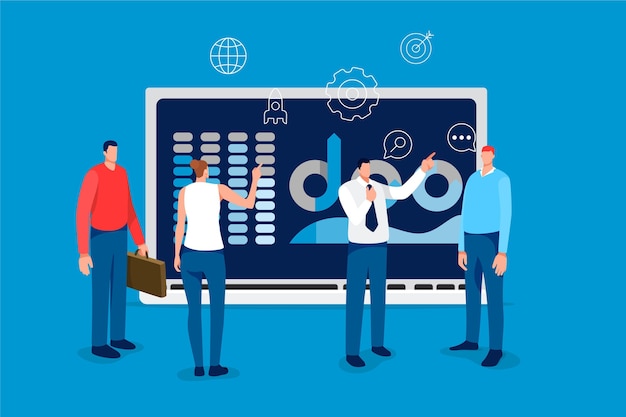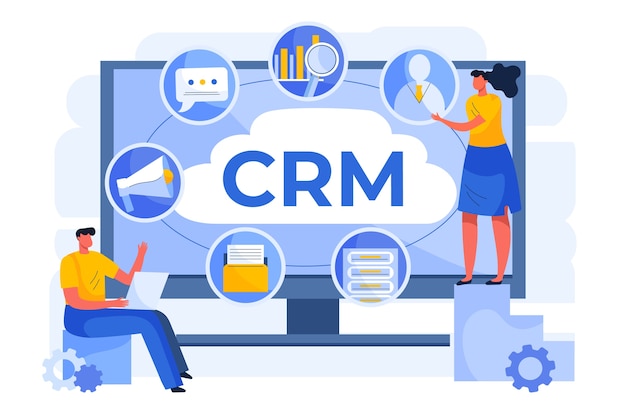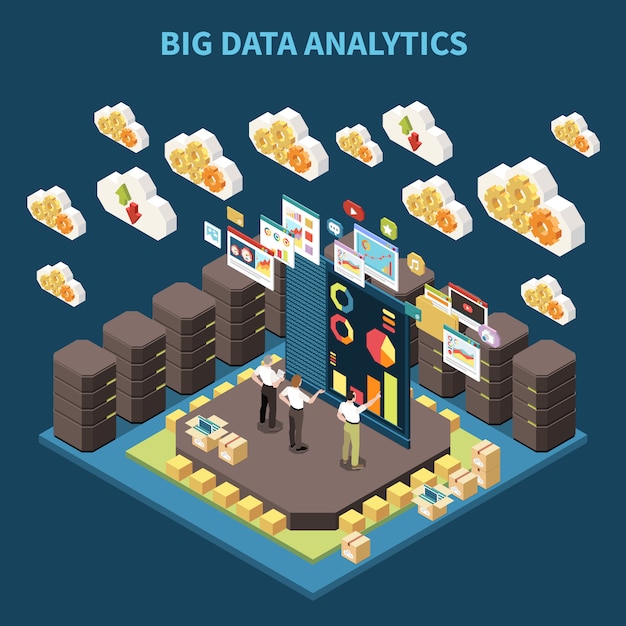Extended ERP System: Meaning, Operational Control, Features, And Benefits
Are you struggling with business efficiency? You are not alone. Many companies, like yours, have faced the challenge of streamlining their operations.
One effective solution to improve efficiency is to implement an extended ERP system.
Built on the foundation of traditional ERP, extended ERP handles all external operations. But is ERP not enough? And how is extended ERP different from conventional ERP? With this guide, Ekklavya brings you a clear and comprehensive look at the world of extended ERP.
So, let's understand what is extended ERP in detail.

Extended ERP System
Extended ERP expands traditional ERP by incorporating modules that manage external business interactions. ERP systems are all about HR management, finance, inventory and database management. Whereas, the extended version goes beyond the basic functionalities of traditional ERP solution by offering additional features like:
Customer relationship management
Business intelligence
Supply chain management
Project management
Sales-force automation
E-commerce integration
Now the question comes: Why do businesses use extended ERP? It is because Extended ERP system offers:
Additional operation tools for data analytics & reporting
Real-time data on product planning and life cycle management
Hence, the common parties considering extended ERP are growing businesses, wholesalers, e-commerce providers, retailers, manufacturing companies, transportation firms and healthcare providers. They use an extended ERP type to:
Save on their time and monetary costs
Systematise their business operations
Tracking the shipment and delivery pipelines
Help employees improve their productivity
Integrate sales with financials and supply chain.
Enhance customer experiences
Difference Between ERP And Extended ERP
Now that you know the extended ERP definition, you may wonder, do you actually need it? Many businesses struggle to decide whether they need a traditional ERP or an extended ERP system.
As we know that automated ERP systems focus on core internal functions like finance and human resources. But, an extended ERP system expands its reach beyond internal operations. It handles core external activities relating to CRM, data analytics, supply chain, etc.
Gartner report states that businesses that integrate extended ERP experience a 35% improvement in supply chain efficiency compared to those using core ERP alone. So does this mean that traditional ERP software is ineffective? Not really. Neither of them is inherently bad. It really depends on what you need!
Below is a table showing the difference between ERP and extended ERP to help you understand them better:
| Feature | ERP | Extended ERP |
|---|---|---|
| Focus | Internal business functions (finance, payroll, etc.) | External operations (CRM, supply chain, etc.) |
| Scope | Limited to core processes | Integrates additional business functionalities |
| Data Flow | Internal data processing | Internal & external data integration |
| Business Growth Support | Primarily manages existing operations | Supports expansion and collaboration with external entities |
| Scalability | Can be restrictive in growth | Flexible and adaptable for scaling businesses |
| Benefits | Streamlines internal operations | Improves external collaboration and automation |

What Are The Essential Extended ERP Components?
An extended ERP system consists of multiple components that integrate with core ERP systems to enhance overall functionality. These components ensure that businesses can manage both internal and external operations efficiently.
The following are the essential extended ERP modules:
Customer Relationship Management (CRM)
Product Lifecycle Management (PLM)
Supply chain management/Warehouse Management
Business intelligence & data analytics
Let us understand them in detail.
Most Important Extended ERP Modules?
Below are some of the essential modules of an extended ERP system:
Customer Relationship Management (CRM): This module tracks customer interactions, sales leads, and post-sale services. It helps ensure a consistent customer experience by centralising all customer data.
Action Tip: Regularly update customer records and use automated follow-ups to keep engagement high.
Product Lifecycle Management (PLM): PLM covers the entire lifecycle of a product from initial design to end-of-life management. It ensures quality and timely updates.
Warehouse Management: Warehouse management module is about managing procurement, logistics, and stock levels. They enable real-time tracking of goods and reduce delays.
Action Tip: Use warehouse inventory tracking system that gives real-time alerts for stock levels to prevent shortages and excesses.
Business Intelligence & Analytics: These tools process large amounts of data to provide actionable insights. Businesses use these insights to inform strategy and measure performance.
Action Tip: Set up dashboards that monitor key performance indicators (KPIs) to aid in decision-making.
E-commerce Integration: This integration connects online sales channels with backend systems for seamless order processing and inventory management.
Action Tip: Ensure your e-commerce platform communicates regularly with your ERP to avoid order delays.
Features Of An Extended ERP System
An extended ERP system enhances core ERP functionalities with advanced features such as:
Real-Time Data Processing: Provides instant updates on inventory, sales, and supply chain movements.
Cloud-Based Integration: Enables businesses to access ERP data from anywhere with seamless cloud functionality.
AI-Driven Analytics: Uses predictive analytics to improve business decision-making and reduce risks.
Multi-Channel Support: Connects multiple platforms, including offline stores, online shops, and mobile apps.
Automated Compliance Management: Ensures businesses follow regulatory requirements without manual intervention.

Advantages And Benefits Of An Extended ERP System?
With an Extended ERP System businesses can:
1. Conduct Market Trend Analysis – Businesses can forecast demand, track customer behaviour, and identify trends using ERP-driven analytics.
2. Increase Work Efficiency – Automation is at the heart of extended ERP systems. By automating repetitive tasks, companies can:
Reduce manual data entry and minimise human error.
Accelerate processes such as order fulfillment and inventory management.
Free up staff to focus on strategic tasks rather than routine operations.
3. Gain Control over Operations – Multi-language and multi-currency ERP solutions like Ekklaya ERP, allow companies to expand internationally while complying with regional regulations. This is crucial for businesses operating across multiple countries.
4. Automate Stock Replenishment – Inventory management becomes smarter with extended ERP. The system can:
Monitor inventory levels continuously and send trigger notifications for automatic restocking when items fall below a set limit.
Implement different replenishment strategies, such as lot-for-lot or periodic review systems, depending on your business model.
Reduce the risk of dead stock and overstocking.
5. Simplifies Financial Reporting
Financial management is a critical part of any business. Extended ERP systems simplify financial reporting by:
Automatically generating error-free financial statements like balance sheets and income statements.
Streamlining accounts payable and receivable with built-in automation.
Providing audit trails that make compliance more straightforward and transparent.
6. Reduces Operational Costs
Reducing costs is a major benefit of ERP implementation. With extended ERP, businesses experience:
Lower labour costs through automation of repetitive tasks.
Reduced errors and waste, leading to cost savings in production and supply chain operations.
Better resource allocation as employees are freed up for higher-value tasks.
7. Maintains Quality Standard
Extended ERP systems include quality management modules that help:
Spot product problems early in making them.
Follow industry rules to avoid recalls.
Track and fix quality issues to always get better.
8. Helps Predict the Futur
ERPs have forecasting tools that are key for planning:
Guess future sales to manage stock.
Know when machines need fixing to avoid breakdowns.
Plan resources based on what customers want and what's happening in the market.
How Is An Extended ERP System Implemented And Customized?
Implementing an extended ERP system is a structured process that requires careful planning and execution. Here are the key steps:
1. Assessment:
The first and most significant task is to evaluate your current processes thoroughly.
What are your top business priorities?
Which areas are lacking behind?
Where is most of your manpower utilised?
Which external operations do you wish to automate?
Ask these questions, create a detailed requirement list, and consult with all stakeholders to ensure all needs are met.
2. Integration: Merge the extended ERP components with your existing systems. Integration should ensure smooth data flow between legacy systems and new ERP modules. Plan the integration process with an experienced ERP vendor or consultant.
3. Customisation It’s not necessary to chase trendy software, which may or may not suit your business. Always tailor the ERP system to match your business processes. Customisation can include configuring dashboards, reports, and specific modules to suit your operational requirements.
4. Training & Deployment: Ensure that employees are well trained to use the new system. Set up training sessions and create user manuals to help staff adapt quickly.
While the benefits are clear, implementing extended ERP can come with challenges like:
High Initial Costs: The upfront investment in software, hardware, and training can be significant.
System Complexity: Integrating multiple modules and ensuring data consistency requires robust planning.
Data Migration: Moving data from legacy systems to the new ERP can be time-consuming and may require data cleaning.
Which is why businesses go for third party tools that power up the extended ERP system to one level higher. Read below to know more.
How Can ERP Systems Be Extended With Third-Party Software?
Many businesses integrate third-party tools to extend ERP functionality. This is done through:
APIs and Plugins: Connecting external software with ERP systems.
Vendor-Supplied Interfaces: Allowing seamless data exchange between platforms.
Custom Development: Building tailored solutions to meet unique business needs.
Conclusion
An extended ERP system revolutionises business operations by managing external and internal functions. It improves supply chain logistics, enhances customer relationships, and automates sales processes, helping businesses stay competitive.
Looking for expert guidance on implementing extended ERP? Contact Ekklavya ERP Solutions today and transform your business operations with a customised ERP strategy.
Frequently Asked Questions About Extended ERP System
Extended Enterprise Resource Planning ERP systems not only manage core internal functions such as finance, HR, and inventory but also integrate external operations like CRM, supply chain management, and project tracking.
The most critical modules typically include CRM, warehouse management, Business Intelligence, and E-commerce Integration.